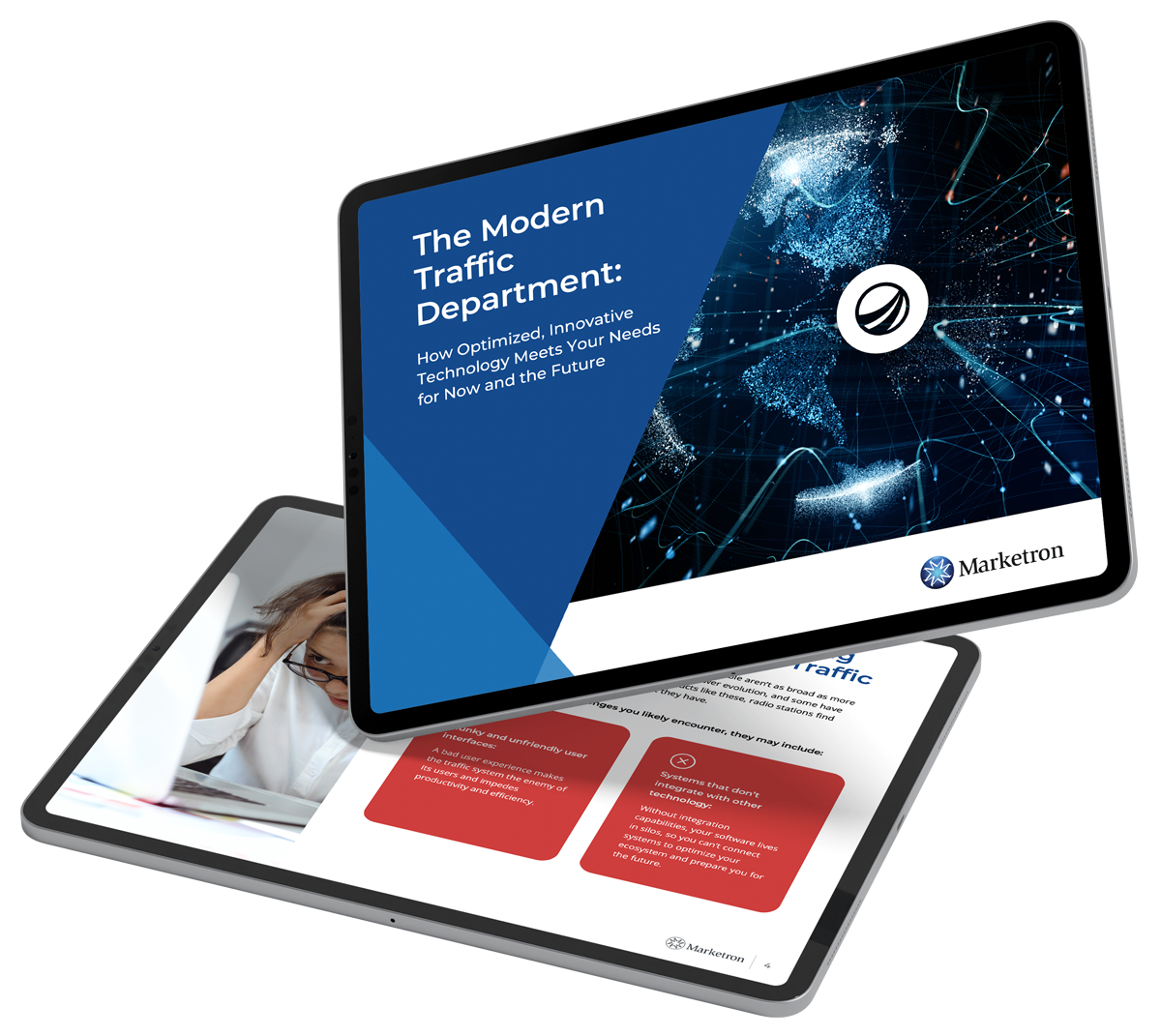A driving trend in the radio industry is operational efficiency. As operating costs increase, you need solutions that enable your station to work smarter and leaner. Integrated technology is a proven solution. As your radio traffic system is your hub, integrations start there.
Many factors determine radio traffic software’s integration capabilities. It depends on the architecture of the application, its application programming interfaces (APIs), data exchange options and more.
Older legacy systems typically have more integration challenges. Some solutions simply don’t have the development framework or R&D efforts to connect. At the end of the day, you need to ask if your radio traffic solution can actually integrate.
Integration Challenge One: The Architecture Isn’t Agile
A software’s architecture describes its building blocks, including coding languages and how components work together to deliver features. When it’s modern, it’s flexible and scalable. In other words, it has the core competencies to work fine independently and as an ecosystem.
When software has older frameworks that haven’t been optimized or improved, it still works. It just doesn’t “play nice” with others. Integrations are possible but often require lots of time and are expensive. You pay the price for this. Once integrated, there still may be ongoing challenges that impact performance and usability.
Integration Challenge Two: Data Exchange Isn’t an Integration
APIs play a major role in data exchange between systems and are often part of an integration. However, APIs alone don’t deliver a true workflow integration where sharing and moving data occurs downstream. The systems still operate in silos, requiring manual work and switching back and forth.
Workflow integration is the true path to operating leaner without impacting functionality, security or data integrity.
Integration Challenge Three: APIs Aren’t the Same
APIs are extremely useful in the big picture of integrations, but there are differences here, as well. Their job is to share data, which seems easy. It’s not, especially with legacy systems that use asynchronous APIs.
Asynchronous APIs must manage concurrency and callbacks simultaneously. They can only request information and await the reply. Often, these are bulk loads, so timeouts are common. They may also only send information sporadically, leading to lapsed data or failures. Further, these APIs may not be able to share all the information necessary, creating more manual work.
RESTful APIs use open interfaces that make calls for data across systems. They do so efficiently and quickly without the restrictions of asynchronous APIs.
Integration Challenge Four: Security Can Be a Concern
Your radio traffic system contains valuable information, some of which is confidential. It must be secure, but legacy integration methods may not guarantee this. The key to API security is authorization and authentication. Open APIs are secure APIs. They make connections easy without compromising security.
Any integration between an older and newer system could impact the security buffer. This could expose systems to greater risk. Asking questions about this is essential for peace of mind.
Integration Challenge Five: The Integration Isn’t Bidirectional
One of the most critical aspects of a workflow integration is that it’s bidirectional. Data transfers go both ways. That’s pivotal in the most common radio traffic system connections with digital advertising software and payment platforms. Information must go back and forth so there’s a single source of truth and the ability to manage advertising revenue from start to finish.
If it’s not bidirectional, it’s simply not an integration. It’s a one-sided data exchange via API.
Integration Challenge Six: Syncing Isn’t 100%
Along with bidirectional capabilities, you also need syncing of information. This is especially crucial when working with combined airtime and digital advertising orders. If the syncing isn’t 100%, you must use both systems, which slows down processes. Some radio traffic and digital integrations are okay at the order point but don’t allow for revisions. It’s another function to investigate.
Does Your Radio Traffic System Make the Integration Grade?
In looking at these challenges, you may realize your current software has many deficiencies. This keeps you from operating more efficiently and reducing costs. To optimize your operations, you need a modern traffic system.
Learn more about integrations and how an innovative traffic system works by reading our e-book, The Modern Traffic Department.







